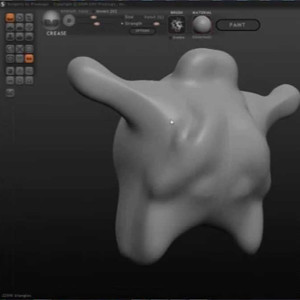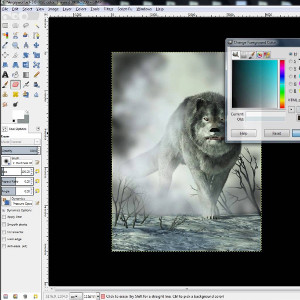Daniel is a classically trained artist. As an art student at the University of Georgia, he learned to create art in traditional forms such as stone carving, photography, and oil painting. Now, however, he creates all of his artwork digitally. Yet he still uses much of the skills he acquired in school.
______________________________________
To create his art, he often starts by using virtual sculpting software to create 3D Models of things such as animals, trees, rocks, etc. One can think of it much like working with clay, except it all happens virtually on a computer. When the sculpting is done, these same computer applications allow the artist to "paint" the models' surface to produce a complete virtual representation of the subject.
An additional step can be taken in the creation of models of people and animal. In a step known as "rigging", the model is given a virtual skeleton that allows it to be "posed": arms and legs can be bent, heads turned, etc. Often, artists will trade and sell these models for use in each other's works.

______________________________________

Using other software programs Daniel then creates a scene by importing and arranging these 3D models. It's a bit like setting up a still life, but a bit more complex because not only can he arrange the models, but he can also create atmospheric effects such as light and fog. At this point, Daniel uses the software to render the image. This is where the computer generates a virtual photograph of the scene. It can take many hours, days, or even weeks depending on the complexity of the scene for the computer to do the rendering.
______________________________________
Finally, Daniel uses his painting skills to rework this virtual photograph, painting in the aspects that are still too difficult for the computer to handle, enhancing forms and colors, and adding those special touches that make his work pop.

______________________________________

For his Premier works for collectors, a single print on canvas is produced using a special large format printer which uses archival quality inks. The canvas print is then stretched on wooden stretcher bars. Finally, the one-of-a-kind print is hand signed by Daniel.
______________________________________
If you'd like to see a high speed demonstration, here is an hour long session condensed into two minutes:
______________________________________
It's a complex way to create art, involving skills of multiple artistic disciplines, but the results can be quite spectacular. It's a form of creation that is new to the art world.
Digital Art in general is received much like photography was over a century ago when it was a young art form. There's no reason that digital art won't achieve similar recognition in the coming years. Imagine if you had the opportunity go back to New York in the early Twentieth Century and pickup a work from Alfred Stieglitz when they were brand new...
